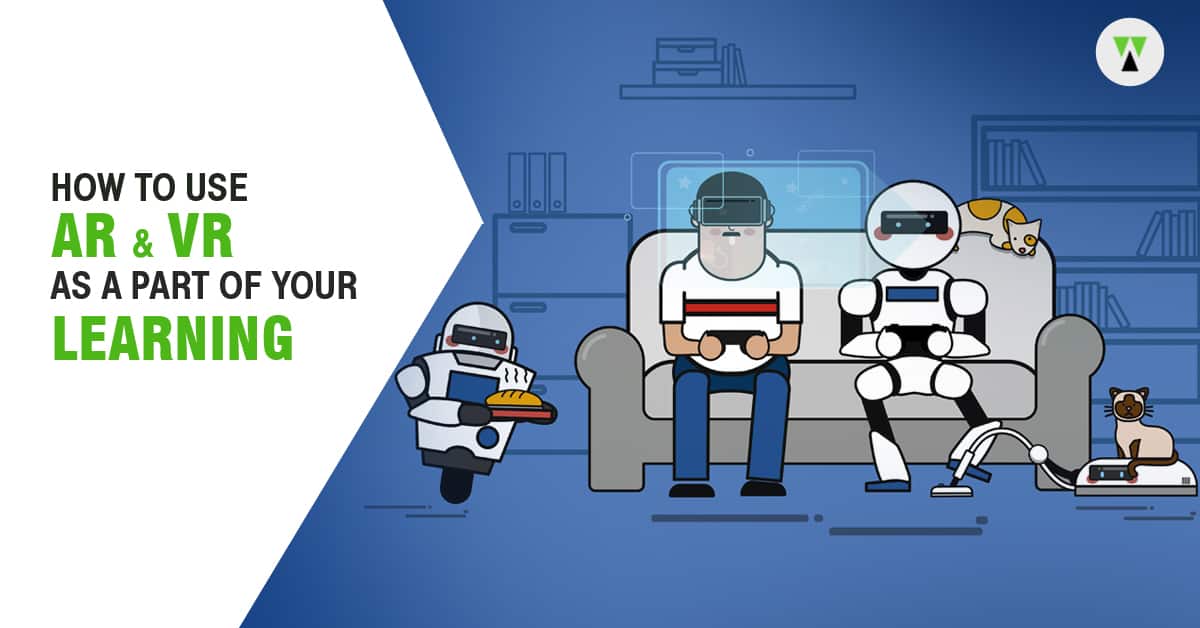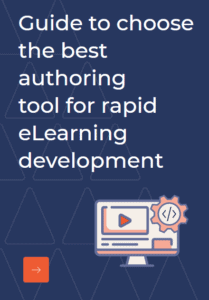What’s the next big idea? What would be the next evolutionary step? These are questions that often trigger discussions, extensive research, and subsequent technological upgrades. In the past few years, we have witnessed the emergence of cutting-edge mobile technology and the evolution of Augmented Reality (AR) and Virtual Reality (VR) tools making those available for a larger audience and hence opening up new channels for delivering engaging learning experiences. We have touched based upon how VR and eLearning go hand in hand, the use of AR and VR in safety Training, the importance of VR in safety training, and also discussed the importance of AR and VR in training in manufacturing companies. AR and VR have great scope and to utilize it well, it is essential to understand how they can be put to use in the best possible way. So, here are few ways to use AR and VR as a part of your eLearning.
Enhanced Simulations
One of the perks of using a VR headset is that it immediately blocks away from any distractions. That in itself leads to an enhanced way of learning. VR can be used to create enhanced simulations by taking the learners into a virtual world where interactions can give immediate results (good or bad) allowing them to learn by experimenting, supported by audio inputs to improve learning. AR on the other hand can take the learners into a reality-based learning wherein 3D images can be superimposed on real objects through a device, hence, showcasing the real situations in a different light and making them more comprehensible and engaging.
Real-time Learning
As a continuation to the abovementioned point, AR and VR can be used to provide real-time learning. This can be done through real interactions with experts in different fields (virtual conferencing), the use of virtual environments to mimic the real world, experiment on various situations virtually, or finding answers to real-time issues using AR.
Immersive Personalized Learning
Gaming in the virtual world is highly advanced with personalized avatars to personalized interactions. A similar approach can be carried into the learning sphere too using AR and VR to allow learners to experience learning that is personalized to an individual’s skills or designed to cover specific skill gaps. AR and VR-based learning can be assigned to learners based on the existing level of understanding.
Assessments with Visual Feedback
The perk of VR or AR in eLearning is that the results can be showcased immediately and the remedial measures can be assigned promptly too, based on connectivity, available knowledge pool, etc. eLearning simulations, branching scenarios and other forms of qualitative assessments can be included while using AR or VR for eLearning. Based on the level of integrated analytics, the learners can identify their weak points and also drive the targeted learning based on the inputs from the assessments. Hence, allowing them to improve in all aspects rather than keeping them just partially skilled.
Advanced Analytics
Right from tracing the interactions to gauging the level of interest, the integration of AR or VR technology with data analytics can be a holistic approach. 360-degree learning, if we may call it so. AR and VR devices require not just passive attention by active involvement in terms of interaction and decision making, hence allowing to assess not just the memory capacity but also the motor and spatial learning capabilities of the individual. It can also be used to point out areas that may need special attention, improvement in terms of content simplicity, and even identify content gaps if any.
More Gamification Options
Goes without saying that integration of AR and VR in eLearning brings in a more immersive and interactive gamification experience. Right from interacting virtually with the leaderboard to watching the reward points accumulating, adding personalized touches through interaction, and more, AR and VR take the gamification element a notch higher.
Using AR and VR in eLearning brings in many perks including (but not limited to) online socialization with peers, knowledge-triggered discussions, the quest for new learning options through better interactions, exploration, and experimentation. While Oculus Quest, Sony PlayStation VR, Valve Index top the list of VR devices, Google lens, Google Glass, AR-based Worksense application suite, and smart glasses from DAQRI too are new names that come with a lot of promises. Wondering how to add extra dynamism in eLearning? Drop us a message, we may have just what you are looking for.



